A glimpse behind the scenes of a conservancy meeting in Namibia
Sustainable Hunting in Namibia
by Serena Bouwer on July 17, 2023
Recently, I had the exciting opportunity to spend an extended stay on one of the hunting farms in our portfolio: Khomas #1. This presented the opportunity to participate in a meeting of the conservancy to which this farm belongs.
This experience was extremely fascinating and provided me with a deep insight into the thoughts, topics, challenges, and goals of the farmers within this conservancy.
The conservancy covers the surrounding farms southwest of Windhoek and shares the common goal of ensuring the conservation of wildlife.
In this article, I would like to share my impressions from this meeting.
Since the mid-90s, the game management association has been in existence, now totaling 83,500 hectares of land. It consists of 11 member farms, each of which regularly surveys the wildlife populations on their farm. The data is collected and analyzed to draw valuable insights for sustainable hunting.
Participants engaged in intensive discussions about current wildlife populations, movements, and the effects of rainfall patterns. This led to interesting insights into wildlife populations, such as the impact of drought on warthogs and the outbreak of rabies among kudus a few years ago. These species’ populations have suffered significantly, and it will take years for them to recover, but the farmers highlighted the positive aspect that the populations are slowly growing in the region, some farms more than others.
Farmers were particularly pleased with the growth of the eland population in their game management area. Regarding springboks, it was noted that they are increasingly retreating into the mountains, despite their usual preference for open areas. This is partly due to displacement by emerging settlements and partly due to the green grasslands in the valleys, which are only available there at this time of year.
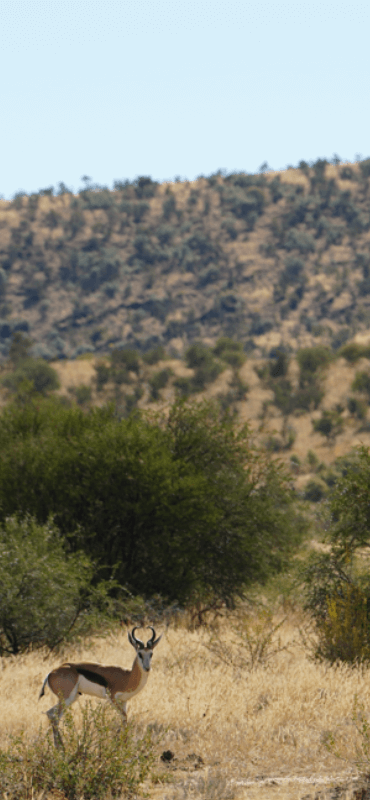

Challenges and Collaborative Measures Against Poaching
The game management meeting also provided a valuable platform for discussing and implementing collaborative measures against poaching. Poaching is a serious problem that leads to significant losses of wildlife and livestock. With no expectation of government support, the responsibility for combating poaching falls on individual farmers. However, effective measures can only be taken when everyone works together and supports each other in this challenge.
The protection of wildlife is the focus, as none of the farms are fenced, allowing wildlife to roam freely within the conservancy area. One highly effective measure discussed in the meeting is the use of expensive real-time cameras. These cameras are installed along known paths used by poachers and allow for effective monitoring. However, the costs of these cameras must be financed by the farmers themselves. It was emphasized to me once again that without revenue from hunting, funding for these cameras would not be possible. Hunting revenues enable the farmers to implement this costly but effective measure.
It was impressive to see how the farmers come together and use their resources collectively to protect wildlife and their habitats.
Social Engagement of Farmers and Its Significance
A remarkable and often overlooked aspect that caught my attention during the meeting was the social engagement of the farmers. They reported regularly donating meat from hunting to those in need and prioritizing projects that are personally meaningful to them. Whether it’s donating a zebra to an orphanage or a hartebeest to nursing homes and schools, the farmers received grateful letters in response to their support. This information only came to light upon active inquiry, showing me that these valuable contributions often go unnoticed, as everyone keeps this information to themselves.
It made me realize that the positive impact of hunting in Namibia is often overlooked in Europe. In Germany, for example, only the image of the hunted game remains prevalent, leading to a distorted perception of hunting in Namibia. The fact that employees, their families, guest establishments, and needy individuals benefit from this meat, that everything is utilized, and that hunting is not only a significant source of income but also the most environmentally friendly form of land use, remains unknown to the general public. I believe it is a great opportunity to clearly demonstrate the positive effects of selective hunting in Europe to promote understanding and appreciation for this sustainable practice.
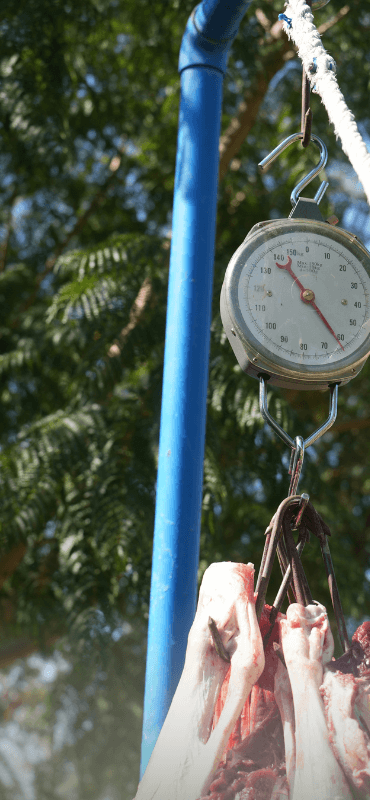
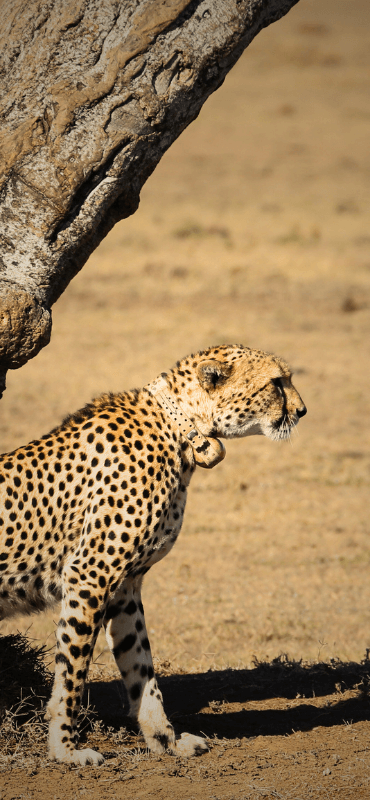
Research Collaboration: Building a Common Understanding of Predator Behavior to Promote Harmonious Coexistence
An expert from the Cheetah Research Project of the Leibniz Institute for Zoo and Wildlife Research was also invited by the farmers to learn more about the behavior of predators such as cheetahs, leopards, and hyenas. It is a long-term project that benefits both the research institute with its findings and the farmers who gain valuable insights into the behavior and movement patterns on their farms. Farmers provide information (e.g., wildlife camera footage, sightings) to the research institute, which is then analyzed in conjunction with the institute’s own studies. Farmers can use this information to minimize wildlife and livestock damage and reduce conflicts between predators and wildlife or livestock. The goal is not to decimate predator populations, which often cause significant damage, but rather to promote coexistence.
Collaboration for Wildlife and Habitat Conservation
I was pleasantly surprised to see how the farmers within the conservancy work together and pull in the same direction. There is no rivalry or competitive spirit; instead, there is strong, solution-oriented cooperation.
Why did this cooperation fascinate me so much? Because it is not a given. It would be easy for each farmer to focus solely on their own interests, using the large kudu currently on Farm XYZ for their own benefit and profiting from trophy hunting revenue in the short term. However, the farmers here implement an admirable approach: they collectively care for and protect their freely roaming wildlife, thereby regulating sustainable intervention in the population and preserving the natural habitats and migration routes of the wildlife.
They collectively celebrate the growing populations of kudus and elands, aiming to return them to their former numbers. For them, sustainability is the clear focus, and it is evident that wildlife holds value, and sustainable utilization protects both the species and their habitats. My participation provided me with an unfiltered view.
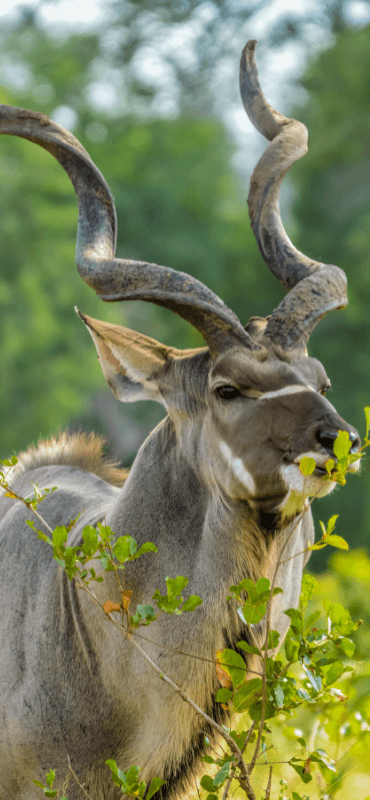
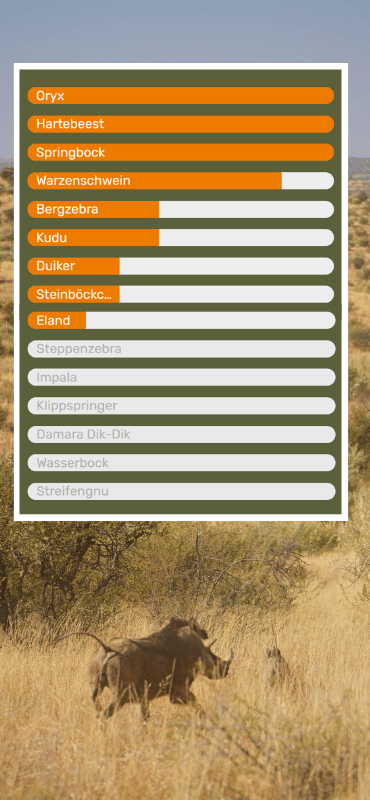
The Significance of Access to Wildlife Populations for Hunters
This meeting also showed me once again how helpful it would be if every hunter interested in hunting freely roaming wildlife in Namibia had access to wildlife populations. On our website, we have integrated a graphical representation so that every hunting enthusiast can get an idea of wildlife populations. Of course, it is only an estimate and varies depending on rainfall, pasture, and other factors.
Nevertheless, it ensures that the specific species is hunted where wildlife populations are healthy and intervention makes sense. Sometimes, it’s just a few kilometers away. The farmers in the game management association understand that collaboration and the exchange of information are crucial to promote sustainable hunting practices. By collectively discussing wildlife populations, movement patterns, and other factors, they can make effective decisions for sustainable utilization. This cooperative approach allows them to pool their resources and efforts and collectively advance the protection of wildlife.
CONCLUSION
A Positive Example of Conservation and Sustainability
Fazit

Text: by Serena Bouwer on July 17, 2023
TheEcoHunter – Sustainable Hunting in Namibia
Overall, the conservancy meeting made it clear to me how important it is for landowners—regardless of their primary economic focus—and relevant stakeholders such as research institutes to collaborate to promote the sustainable use of wildlife and preserve the diversity and value of wildlife. Through their dedicated collaboration and shared focus on sustainability, they set a positive example for conservation and demonstrate how responsible use of natural resources is possible.
NOCH FRAGEN?
Dieser Jagdratgeber soll dir dabei helfen, die richtige Entscheidung für deine Jagdreise zu treffen. Du brauchst dafür noch mehr Informationen?